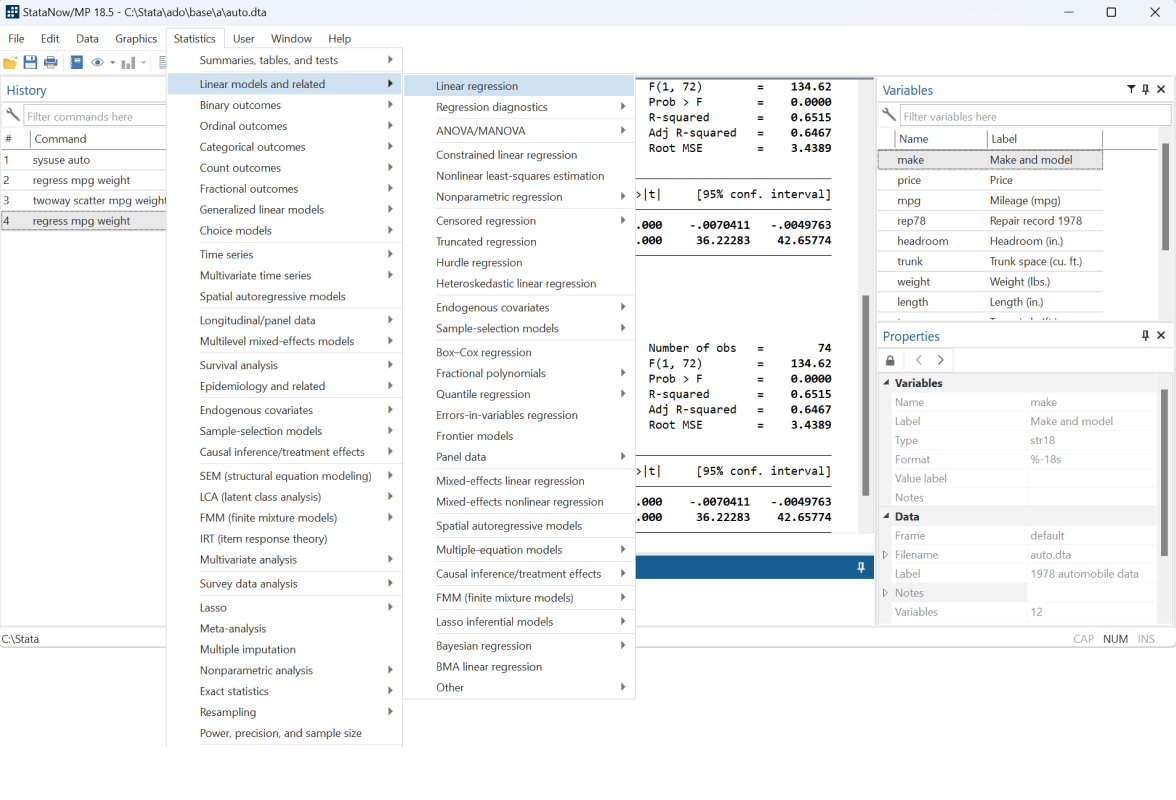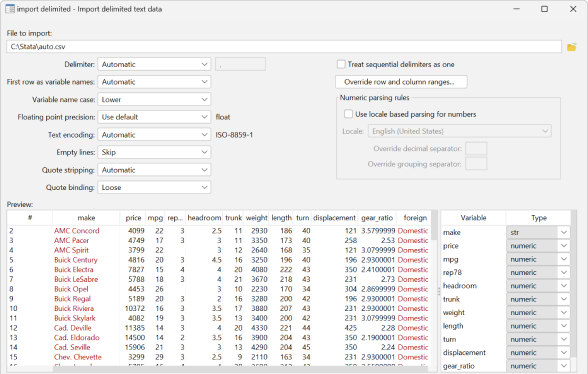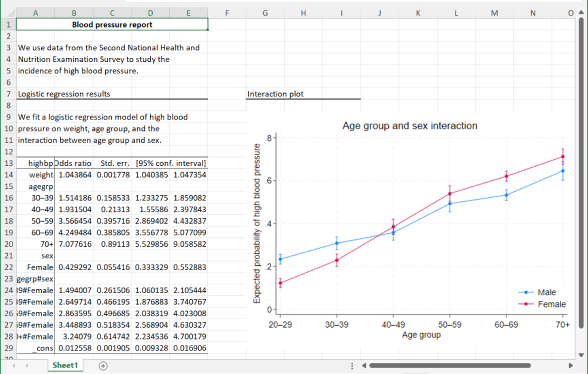Teaching your course with Stata provides your students with tools and skills that translate to their professional life. Our user-friendly platform, robust statistical capabilities, and abundant teaching resources allow you to spend more time focusing on core instruction and less time teaching software.
You can access all of Stata's data manipulation, statistical, and visualization features from the menus and associated dialogs.
Our YouTube channel offers videos and short tutorials covering introductory to advanced topics. Ideal for classroom use, the channel allows you to browse curated playlists or create one tailored to your course needs.
Stata's syntax is intuitive and easy to learn and teach. Once you learn the syntax of one estimator or graphics command, you will effortlessly understand the rest.
. regress y x1 x2
. logistic y x1 x2
Explore a wealth of online materials teaching Stata usage and addressing common queries. From Stata's official FAQs to invaluable resources from UCLA, UW–Madison, and beyond—all are accessible at stata.com/resources.
All your Stata usage questions will be answered quickly by a dedicated staff of expert Stata programmers and statisticians.
Tap into Stata's global user community through Statalist, the official forum. Post queries, initiate discussions, explore trending topics, and access user-contributed commands—a vibrant knowledge-sharing hub.
Stata comes with 36 volumes comprising more than 19,000 pages of PDF documentation containing calculation formulas, fully worked examples, references to the literature, and in-depth discussions.

"Among all common statistical packages, Stata is the best for students with very different programming backgrounds: Stata is very easy to pick up for students with no programming experience at all; at the same time, for students with extensive programming experience, Stata provides sufficient flexibility for them to develop their own codes and ado-packages."
Ling Cen, Professor of Finance, The Chinese University of Hong Kong

"Stata is an integral part of my introductory probability and statistics course (200-300 students) as well as my applied econometrics course (100-150 students) at Cornell. In both cases, my students need to learn how to actually apply the mathematical methods I teach to answer questions with real data. [...] I use Stata in my courses for several reasons. First, it is a solid, relatively inexpensive product that is both powerful and easier to learn than many of the alternatives. With the support and resources available at stata.com and elsewhere, Stata has a relatively shallow learning curve. Second, Stata is an established company with a dedicated quality assurance group that verifies their features work—I trust it more than some open source software. And third, I am training the economists of the future, and it is extremely valuable for them to know the software that most economists currently use to analyze data."
Douglas McKee, Cornell University
Student pricing. If your students only need Stata for one course, they can purchase a 6-month or 1-year license at an affordable rate.
Prof+ Plan pricing. Our best pricing for faculty and staff to purchase their own single-user license.
1-week license. Only need Stata for a few days? Instructors can request a short-term license for free.
Undergraduate course license. We offer instructors at accredited, degree-granting institutions who are actively teaching Stata a free 6-month Stata/BE license for use by their class.
Campus and department licenses. Many universities have campus-wide licenses or departmental licenses your students can easily access. Contact us to see if your school has one.

When you buy Stata, you get everything for your statistical, graphical, and data analysis needs. You do not need to buy separate modules or specialized software for advanced methods such as multiple imputation and structural equation modeling.

Cover introductory topics such as summary statistics, tabulations, tests of means/proportions, linear regression, and ANOVA. Or explore advanced topics like time series, panel/longitudinal data, survey data analysis, survival analysis, multilevel models, matrix programming, and much more.
Explore Stata's features →

Create hundreds or thousands of graphs in a reproducible manner, and export them to EPS or TIF for publication, to PNG or SVG for the web, or to PDF for viewing. With the integrated Graph Editor, you click to change anything about your graph or to add titles, notes, lines, arrows, and text.
Publication-quality graphics →

Combine, reshape datasets, manage variables, compute statistics across groups. Handle numeric/string data up to 2 billion characters. Cut/paste from spreadsheets. Advanced tools for survival, time-series, panel, categorical, multilevel, imputation, discrete choice, and survey data.
Learn more →

Seamlessly incorporate Stata results and graphs with formatted text and tables in Word, PDF, HTML, and Excel formats. Utilize integrated versioning for reproducible reports. Dynamic documents update automatically when your data change.
Automated reporting tools →